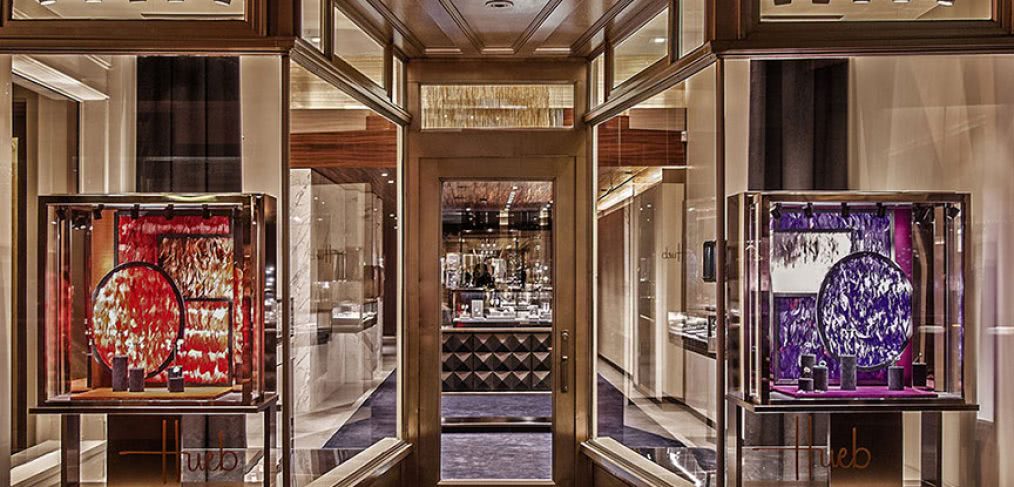
When the bling doesn’t bring the cha-ching: Changing demographics and consumer preferences complicate the jewelry industry
CallisonRTKL’s Dave Scurlock discusses recent trends in jewelry retail and posits why the industry needs a massive dose of innovation.
In the years preceding the financial market crash in 2008, it wasn’t just pop culture icons rocking diamond-studded, over-the-top bling. Young couples were saving to spend on engagement and wedding rings, a girl’s dream was to get that coveted blue box, and the newly wealthy found watches and jewelry to be an irresistible status symbol. These were good times for the jewelry industry. High disposable incomes, easy credit, and broad prosperity created a perfect storm of profits for the retail jewelry market, and as other retail categories shifted with the times, jewelers rode the tide up.
Unfortunately, there was another perfect storm brewing, and it arrived in the summer of 2007, changing everything.
As the global markets emerged from that financial crisis, the retail landscape was indelibly changed. Consumer spending habits were fundamentally different. A new psychology about spending had taken hold, and even as conditions began to improve, it became clear that something was different now. Altered perceptions of value, the hangover of extensive discounting, powerful new E-retailers and a host of other challenges were now part of the language of retail.
And to survive, retailers had to adapt.
Unfortunately, the same conditions that made retail jewelry so profitable before the crash conspired to make it much more challenging in this new world. By 2011, it was clear that a more technologically savvy marketplace meant that consumers were spending in completely different ways than before. Younger consumers were facing challenging conditions, like higher debt leaving college and relatively lower incomes. And these same consumers grew up in the internet age, where status symbols meant less than memories and experiences, and a differing mindset about permanence challenged high-ticket purchases.
That means they are now statistically less inclined to purchase jewelry, since “luxury” now means electronics and experiences such as travel, and because the idea of (and price) of fine jewelry is not aligned with their values or bank accounts. Even worse for jewelry brands, older consumers are still purchasing higher ticket items, but at significantly a lower frequency; they, too, are searching for experiential purchases and unique items.
So, what has this shift in consumer preferences and demographics meant for the jewelry industry?
The jewelry industry, and especially those companies in fine jewelry, were slow to respond to these new market conditions, and are now fighting to rebound after sales trends clearly exposed weaknesses in the business model, using new sales, marketing, store design and operation strategies.
Jewelry retail has shown some growth in the last several years, but as a percentage of retail sales in general, it is tracking behind the market, growing out of the recession at a slower rate.
Industry data show that the average purchase is lower as well. Consumers are buying less than before and spending less per sale. Similarly, new challenges such as slower than anticipated sales during holiday seasons are troubling for the industry.
What now?
Now is the time to leap into the 21st century. The voice of jewelry retail has not changed in a way that speaks to this new market, nor does it present ideas that resonate with younger consumers. This, coupled with a lack of innovation in the digital and physical environments, is where jewelers have fallen behind, but it’s also the area in which they can make a major comeback.
The need to innovate, connect and create excitement with customers is so important, and jewelers are just now reacting in a way that will likely transform and trigger further change in the industry.
Disruptors like online retailer Blue Nile have gained notoriety in spite of their relatively small market share and extremely low margin, but they may be only touching on one part of the way forward. Still, they are a good example to traditional jewelers. The industry needs to use tools that are relevant to young people—informative technology, online availability, product story-telling and strong social media accounts.
Younger people are drawn to retailers with a brand voice and point of view they can relate to (and with which they want to interact). This means developing an app, updating the website and really (really!) connecting with customers through social media platforms like Instagram, Pinterest, SnapChat and Facebook.
Store environments and merchandise presentations need to evolve, as well. The jewelry store of the future needs to be interactive, approachable and have a clear brand message and point of view—something that consumers expect and that compels them to identify with a specific brand.
Although they have been slow in starting this evolution, as an industry, jewelers are in a great position to take advantage of the evolution of other retail categories to create a new vision for jewelry retail that completes their evolution in the new millennium of retail.
While there may be no silver bullet store of the future to fix the industry, jewelers need to increase branding and marketing efforts, update technology and rethink store design if they want to move forward.
